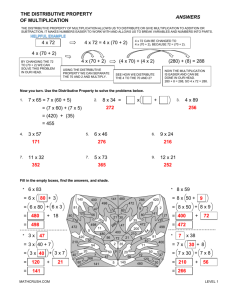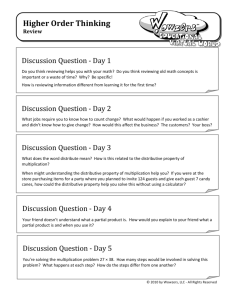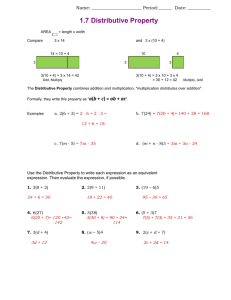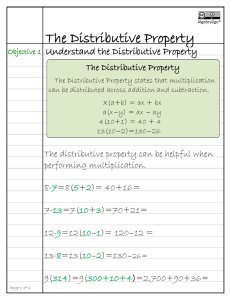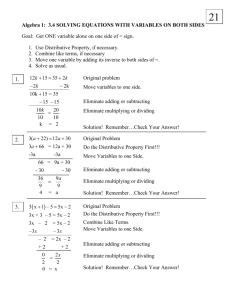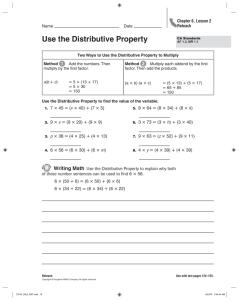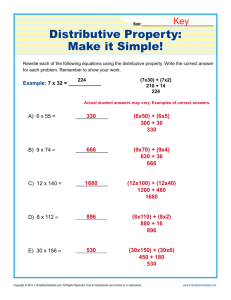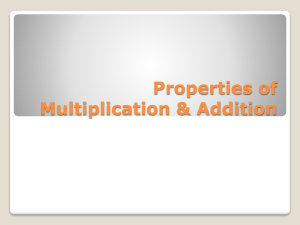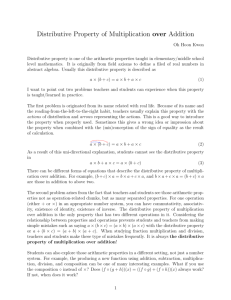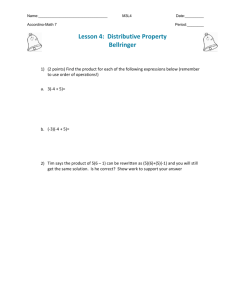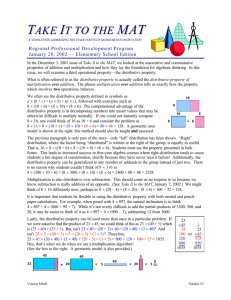Make-up Activities Activity #2 Math Grade 5
advertisement
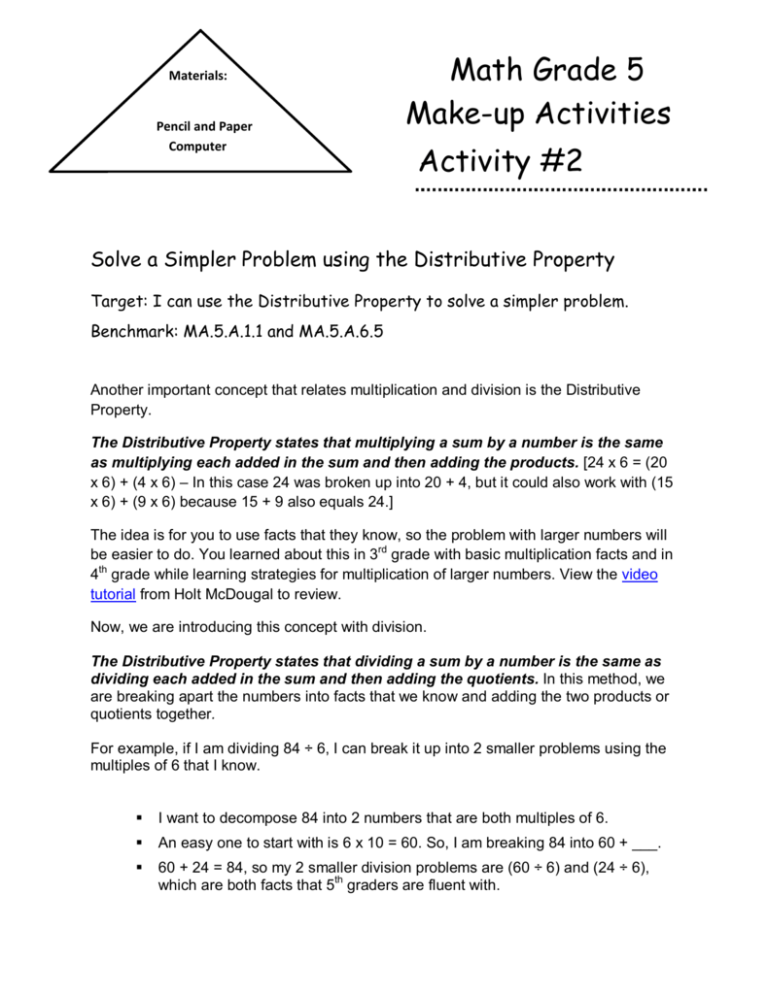
Materials: Pencil and Paper Computer Math Grade 5 Make-up Activities Activity #2 Solve a Simpler Problem using the Distributive Property Target: I can use the Distributive Property to solve a simpler problem. Benchmark: MA.5.A.1.1 and MA.5.A.6.5 Another important concept that relates multiplication and division is the Distributive Property. The Distributive Property states that multiplying a sum by a number is the same as multiplying each added in the sum and then adding the products. [24 x 6 = (20 x 6) + (4 x 6) – In this case 24 was broken up into 20 + 4, but it could also work with (15 x 6) + (9 x 6) because 15 + 9 also equals 24.] The idea is for you to use facts that they know, so the problem with larger numbers will be easier to do. You learned about this in 3rd grade with basic multiplication facts and in 4th grade while learning strategies for multiplication of larger numbers. View the video tutorial from Holt McDougal to review. Now, we are introducing this concept with division. The Distributive Property states that dividing a sum by a number is the same as dividing each added in the sum and then adding the quotients. In this method, we are breaking apart the numbers into facts that we know and adding the two products or quotients together. For example, if I am dividing 84 ÷ 6, I can break it up into 2 smaller problems using the multiples of 6 that I know. § I want to decompose 84 into 2 numbers that are both multiples of 6. § An easy one to start with is 6 x 10 = 60. So, I am breaking 84 into 60 + ___. § 60 + 24 = 84, so my 2 smaller division problems are (60 ÷ 6) and (24 ÷ 6), which are both facts that 5th graders are fluent with. § Now my quotients are 10 and 4, which I add together to get 14. 84 ÷ 6 = 14. § I have used (6 x 10 = 60) and (6 x 4= 24) to help me figure out 84 ÷ 6 = 14. § Here is a framework to use with the Distributive Property. 52 ÷ 4 = _____ (40 + 12) ÷ 4 = _____ (40 ÷ 4) + (12 ÷ 4) = _____ 10 + 3 = 13 Practice using the Distributive property by making up some division word problems, such as “I baked 67 cookies and I want to give an equal amount to 3 friends. How many cookies would each of friend get?”
